WAAS-ELN International Conference on Nuclear Threats and Security
International Conference on Nuclear Threats and Security
14th – 17th September 2012
at
Inter University Centre
Dubrovnik, Don Frana Bulića 4
organized by

Co-sponsored by the North Atlantic Treaty Organization
Agenda
| Friday 14th September | |
| 18:00-19:00 | Registration |
| 19:00-21:00 | Get-together Reception |
| Saturday 15th September | |
| 9:30-10:30 | Conference Opening Remarks
Ivo Šlaus: President of the World Academy of Art and Science (WAAS) and Dean of D. Hammarskjöld University College Des Browne: Former Defence Secretary of the UK and Chair of the European Leadership Network (ELN) Ted Whiteside: Deputy Assistant Secretary General for Public Affairs, NATO Message by Federico Mayor*, Founder and President Culture of Peace, former Director General of UNESCO Message by Ivo Josipović *, President of the Republic of Croatia |
| 10:30-11:00 | Coffee Break |
| 11:00-13:00 | Session I: Illicit Trade in Nuclear Materials – Cyber Security – Regional Perspectives from South-Eastern Europe and the Black Sea Area
Moderator: Francesco Calogero Rapporteur: Colum Murphy Panellists: Benjamin Gittins Nebojša Nešković Yuri Scherbak Enes Zukanović |
| 13:00-15:00 | Lunch sponsored by the Croatian Ministry of Foreign and European Affairs addressed by Dubravka Plejić-Marković, Director of NATO and International Security, Croatian Ministry of Foreign and European Affairs. |
| 15:00-17:00 | Session II: Nuclear Energy and Nuclear Weapons – Inter/Intra State Conflicts and WMD – The Role of NATO
Moderator: Des Browne Rapporteur: Momir Djurović Panellists: Bernd Allert Neven Duić Vladimir Knapp Yuri Nazarkin |
| 17:00-17:30 | Coffee Break |
| 17:30-19:30 | Session III: Escaping the Winds of War – Nuclear Weapons Free Zones
Moderator: Paolo Cotta-Ramusino Rapporteur: Alexander Nikitin Panellists: Adele Buckley Hikmet Çetin Giorgio La Malfa Ivan Orlic |
| Free evening in Dubrovnik | |
| Sunday 16th September | |
| 9:00 -11:00 | Session IV: Sovereignty: the Right of Humanity, Global Governance and Nuclear Weapons
Moderator: Emil Constantinescu Rapporteur: Winston Nagan Panellists: Budimir Lončar Stela Petrova Martin Ramirez |
| 11:15-11:30 | Coffee Break |
| 11:30-13:30 | Session V: Nuclear Weapons & International Law
Moderator: Alyn Ware Rapporteur: Paul Walker Panellists: Garry Jacobs Winston Nagan Ward Wilson Team to prepare Recommendations and the Dubrovnik Declaration: Garry Jacobs, Mladen Staničić, Shatabhisha Shetty |
| 13:30-17:00 | Excursion to Ston sponsored by the International Centre for Development, Energy, Water and Environment Systems (IC SDEWES), Zagreb – brief address by Neven Duić, chair of IC SDEWES
The excursion includes a visit to the medieval city of Ston and a boat journey to the bay of Mali Ston with oysters/mussels lunch tasting. |
| 17:30-19:00 | Recommendations and Conclusions
Panellists: Francesco Calogero Garry Jacobs Winston Nagan Janusz Onyszkiewicz Ivo Šlaus |
| Monday, 17th September | |
| 10:30 | Press Conference |
Format of the conference
Panel Discussions: Moderators will introduce each topic for 7-10 minutes. Each panellist is kindly requested to speak for 5-6 minutes, following which the discussions will be open to all participants. Please note that each intervention should be no more than 4 minutes. Powerpoint presentation projector will be available. The discussions will be followed by comments from the panellists and conclusions by the moderator and rapporteur.
Recommendations and Concluding Session: The rapporteur of each session will present a summary (about 5 minutes). Team for preparing Recommendations will present their proposal, followed by a Q & A session involving all participants, and concluding remarks by five panellists.
During 2012 several conferences devoted to nuclear disarmament have been held and will be held and this one is a part of this endeavour. Therefore, material from preceding conferences and meetings are an input to this conference, as well as papers submitted by participants to this meeting. References and Introduction to this input material are an integral part of this Final Announcement.
Outcome of the Conference: Declaration of the Dubrovnik conference; Proceedings – to be published: options: special NATO publication, journals of the World Academy, dissemination of the conference results and the reports produced to the ELN membership, and Međunarodne Studije published by DHUC (not mutually exclusive); Press conference.
Table of Contents
“Nuclear Threats and Security” – Report by Garry Jacobs and Winston Nagan, published in CADMUS Issue 5.
Session III: Escaping the Winds of War – Nuclear Weapons Free Zones
Session IV: Sovereignty: the Right of Humanity, Global Governance and Nuclear Weapons
Session V: Nuclear Weapons & International Law
Session II: NUCLEAR ENERGY AND NUCLEAR WEAPONS- INTER INTRA STATE CONFLICTS AND WMD – THE ROLE OF NATO
Rapporteur: Momir Djurovic
Nuclear power generation began more than 50 years ago and now generates as much global electricity as was produced then by all sources. Some two-thirds of world population lives in nations where nuclear power plants are an integral part of electricity production. Half of the world’s people live in countries where new nuclear power reactors are in planning or under construction.
Today nearly 437 (2002 year- 440) nuclear reactors produce electricity around the world. More than 15 countries rely on nuclear power for 25 per cent or more of their electricity. In Europe and Japan, the nuclear share of electricity is over 30 per cent. In the US, nuclear power creates 20 per cent of electricity. Most nuclear power (NP) plants today use enriched uranium in which the concentration of U-235 is increased from 0.7 percent U-235 to (nowadays) about 4 to 5 percent U-235. In 2010, NP represented only: 13% of global electricity production and 6% of total energy production in the world. Uranium is a scarce resource; its supply is estimated to last only for the next 30 to 60 years depending on the actual demand.
The time frame needed for formalities, planning and building of a new nuclear power generation plant is in the range of 20 to 30 years in the western democracies. In other words: It is an illusion to build new nuclear power plants in a short time.
Nuclear power (NP) started as a brilliant/amazing new technology from the fifties (first NPP: 1954). Emerging as culmination from the series of brightest scientific ideas and greatest fundamental discoveries ever NP was initially welcomed with huge enthusiasm and seen as the solution of energy problems for mankind. With nuclear power, electricity would become “too cheap to meter” (Lewis L. Strauss, chairman of the U.S. Atomic Energy Commission, 1953-1958).
From today’s point of view, the prospects for nuclear energy as an option are limited, the reports find, by four unresolved problems:
►high relative costs;
► perceived adverse safety, environmental, and health effects;
► potential security risks stemming from proliferation;
► unresolved challenges in long-term management of nuclear wastes
- Cost. In deregulated markets, nuclear power is not now cost competitive with coal and natural gas. However, plausible reductions by industry in capital cost, operation and maintenance costs, and construction time could reduce the gap. Recent event in Fukoshima show, practically, that the cost of NP is incalculable. Carbon emission credits, if enacted by government, can give nuclear power a cost advantage.
- Safety. Modern reactor designs can achieve a very low risk of serious accidents, but “best practices” in construction and operation are essential. We know little about the safety of the overall fuel cycle, beyond reactor operation.
- Waste. Geological disposal is technically feasible but execution is yet to be demonstrated or certain. A convincing case has not been made that the long-term waste management benefits of advanced, closed fuel cycles involving reprocessing of spent fuel are outweighed by the short-term risks and costs. Improvement in the open, once through fuel cycle may offer waste management benefits as large as those claimed for the more expensive closed fuel cycles.
- Proliferation. The current international safeguards regime is inadequate to meet the security challenges of the expanded nuclear deployment contemplated in the global growth scenario. The reprocessing system now used in Europe, Japan, and Russia that involves separation and recycling of plutonium presents unwarranted proliferation risks.
The convergence between nuclear power and weapons occurs at two points in the nuclear “fuel cycle“.
The first power-weapons crossover comes during uranium “enrichment that is then converted to uranium hexafluoride gas. Enrichment of the gas means increasing the amount of the fissile uranium-235 isotope, which comprises 0.7 percent of natural uranium, to the 3-6 percent needed to make fuel rods for commercial nuclear reactors. The same that separates the U-235 from the U-238 can be kept running until the percentage of U-235 reaches about 90 percent and can be used for the kind of nuclear bomb that destroyed Hiroshima. Enrichment — low for nuclear power plants and high for bombs — is at the heart of the current controversy over Iran’s plans and capabilities.
The second power-weapons crossover comes when low-enriched uranium fuel is burned in nuclear reactors, whether military, civilian, or dual use. Neutrons produced in the chain reaction are captured by the U-238 to form U-239 then neptunium-239 which decays into plutonium-239, the key fissile isotope for nuclear weapons. Basically, military reactors designed specifically to produce Pu-239 burn the fuel for shorter periods. Commercial reactors, aimed at maximizing the energy output in order to produce electricity, burn the fuel for a year or so before the fuel rod assemblies are changed out. The used or “spent” fuel contains higher percentages of the undesirable (for bomb builders) plutonium isotopes.
Advantages of nuclear power generation: Nuclear power generation does emit relatively low amounts of carbon dioxide (CO2). The emissions of green house gases and therefore the contribution of nuclear power plants to global warming are therefore relatively little.
This technology is readily available and it does not have to be developed. It is possible to generate a high amount of electrical energy in one single plant.
Disadvantages of nuclear power generation: During the operation of nuclear power plants, radioactive waste is produced, which in turn can be used for the production of nuclear weapons. In addition, the same know-how used to design nuclear power plants can to a certain extent be used to build nuclear weapons (nuclear proliferation).
The problem of radioactive waste is still an unsolved one. The waste from nuclear energy is extremely dangerous and it has to be carefully looked after for several thousand years (10’000 years according to United States Environmental Protection Agency standards).
High risks: Despite a generally high security standard, accidents can still happen. It is technically impossible to build a plant with 100% security. A small probability of failure will always last. The consequences of an accident would be absolutely devastating both for human being as for the nature (see here , here or here ). The more nuclear power plants (and nuclear waste storage shelters) are built, the higher is the probability of a disastrous failure somewhere in the world.
Nuclear power plants as well as nuclear waste could be preferred targets for terrorist attacks. No atomic energy plant in the world could withstand an attack similar to 9/11 in New York. Such a terrorist act would have catastrophic effects for the whole world.
During the section the participants specially pointed that:
Nuclear weapon is by international law illegal and it is incompatible with human beings. There have been negative trends in the last 10 years concerning nuclear proliferation and cost for military activities have been increased in the last 10 years. The concern for nuclear explosive devices should be of the same importance as concern on nuclear weapons. There is big concern on transport of nuclear waste (security, environmental, terrorism).
Special attention should be paid to provide public debate on the issues of nuclear energy and nuclear weapons, and special attention has to be paid to student and scientific community, particularly related to human wrights and democracy. The way to rich non nuclear weapons state is a long way ahead and needs full cooperation of the world community. As far as international cooperation and international law concerning nuclear energy and nuclear weapons a lot of time has been wasted. The threats of nuclear proliferation are increasing in spite of UN actions and other activities supported by International law. The need for new instruments such as building new institutions internationally, for example International Nuclear Fuel Agency, International Agency for licensing reactors, International regulation for protecting safety in case of nuclear terrorism, International agreement in avoiding dangerous territories for nuclear activities etc.
It was stated that nuclear energy does not affect unemployment much. There was expressed opinion that we do not need any new nuclear plants, especially in Europe. As for thermonuclear fusion, it has been reported with no big progress.
Concerning the role of NATO, the following was stressed: NATO is concerned about the proliferation of nuclear weapons and other weapons of mass destruction (WMD), as well as their means of delivery. Proliferation threatens NATO’s vision of creating the conditions necessary for a world without nuclear weapons in accordance with the goals of the Nuclear Non Proliferation Treaty (NTP). NATO will continue to implement NATO’s Comprehensive, Strategic’ Level Policy for Preventing the Proliferation of WMD and Defending Against Chemical, Biological, Radiological and Nuclear (CBRN) Threats. NATO will ensure to have the appropriate capabilities, including planning efforts, training and exercises, to address and respond to CBRN attacks.
Session III: ESCAPING THE WINDS OF WAR – NUCLEAR WEAPONS FREE ZONES
Rapporteur: Alexander Nikitin
In his introductory remarks Paolo Cotta-Ramusino (Italy), Pugwash Secretary General and the Chair of the session, stressed that the accumulation of hostilities and political pressure around nuclear program of Iran is the most dangerous knot in modern international relations. NPT was called an “unfair” and “discriminating” Treaty, but it was emphasized that this is the only actual macro-treaty international community has, and the Treaty is “unmodifiable”.
If some country is violating not so fair NPT “rules”, violations should be discussed and understood. It’s a matter for interpretation. Like “aggression” is to be confirmed and defined by the UN SC, “violation” should be internationally recognized and agreed upon. Iran agreed to the system of safeguards. IAEA created system of sanctions. But they should be used as bargaining chips. When Iran agrees for inspections and other control measures step by step – international community should remove sanctions step by step as well.
The Pugwash movement of scientists elaborated and placed on its Internet-site a potential Model agreement between Iran and the international community.
The UN SC made in 2005 a proposal that Iran stop the enrichment process. But there was no “direct threat to peace” from Iran in 2005. UN SC overused its credentials.
Rhetoric between Israel and Iran is high and tense. If Israel would attack Iran, that would lead to a broader war. Already now there is a political use of a threat of war. Israel uses this as domestic tool and as a tool in debates in the US. Nobody in the US is ready to criticize Israel in pre-electoral period.
Alternative is an establishing of an NWFZ in the Middle East.
Giorgio La Malfa (Italy) agreed on a sense of urgency. He warned on two dangers: danger of war around Iran, and other danger – of undermining the NPT regime. He stressed that international community knows how the solution should look like (establish a NWFZ). But what shall be the path to it?
Who can do what? NATO hardly can do anything. Lisbon and Chicago summits showed that NATO distances itself from the problem.
Moral standpoint against nuclear weapons is weakened by ‘old’ nuclear countries like USA and Russia. Turkey has a very crucial role to play. Turkey, a country with booming economy, tried to influence Iran. Other actor could be the EU. But it doesn’t take any clear stand, doesn’t suggest any solution. Europe is afraid to disagree with sanctions, afraid to send around a signal that the West can be divided. European countries can do what Pugwash did during the Cold War: we need to keep talking to conflicting sides, provide mediation between the sides.
ELN as a network of European leaders can get involved into such mediation as well. We must involve Iranian and Israeli politicians. We need to be a bridge between them.
Hikmet Cetin (Turkey) noticed that the risk of instability in the Middle East is higher than everywhere. That is not practical to hope for global nuclear disarmament. But NWFZs are exactly a partial solution. 74% of all territory of Earth is NWF. 114 out of existing 195 recognized states belong to NWFZs.
Idea of NWFZ on the Middle East is with us for many years. First time it gets closer to practical debates. Turkey already tried to be instrumental. Now attention of the Turkey is on Syria. Iran is fully supportive to the Asad’s regime. The conflict can lead to Sunni-Shia conflict.
Turkey considers establishing a NWFZ on the Middle East as deserving full support. We need to assure participation of all states of the region. We support Finland in suggesting its territory for hosting the conference. Even consultations in this direction already improve situation and create trust.
We must remember that instead of nuclear weapons, the chemical weapons could be used in regional conflict in the Middle East. So the goal is not only NWFZ, but WMD-free zone.
Enes Zukanovic (Bosnia and Herzegovina) noted that he just visited Iran on the occasion of the 16th meeting of Non-Aligned movement (NAM). It might be good to allow Iran a way out. We have to over-bridge the gap. New element is involvement of NAM. UN should remain the main framework. NAM is a new way to influence on Iran. Iran has elections next year. We can influence debates. There should be evolution of position of P5. Sanctions work. They create big effect on economy. But sanctions do not lead to solution.
One of the participants questioned, if nuclear deterrence can’t deter Iran, how can we rely upon nuclear deterrence? Paolo Cotta-Ramusino as a Chair replied that deterrence is against other nuclear states, and cannot be used against non-nuclear country.
Paolo Cotta-Ramusino stressed that nuclear issue inside Iran is a unifying factor. Internal dynamics in Iran is more complicated than we think. Sanctions are effective, but they press ordinary people mostly, not regime.
Mr. Scherbak (Ukraine) criticized the very idea of NWFZs calling them “Soviet-type propaganda”. Such zones, he stressed, are created as political promises. But if a country needs weapons – it gets them irrespective of the limitations imposed by rules and regulations of the NWFZ.
There is an international network of Parliamentarians for NWFZs. WAAS and ELN can cooperate on Iranian issues.
Idea of “minimalist” or “initial” interpretation of NWFZ for Middle East was introduced: some countries of the region (like UAE, Kuwait, Oman, Lebanon, etc.) may start reconfirmation of their non-nuclear status by creating a core, a seed of future NWFZ, even without involving Israel and Iran. It is important to reassure non-nuclear status for Iraq, Egypt, Saudi Arabia. Nuclear danger in the ME is wider than just Israeli-Iranian contradictions.
Paolo Cotta-Ramusino specified that we should support not only a conference aimed at immediate and clear results. Process is not less important. If there will be no recognition of the rights of Iran to peaceful atom, then there will be no solution.
Iran is a neighbor of Turkey. But Turkey doesn’t want to see Iran becoming a nuclear-weapon country. At the same time, sanctions and interventions don’t bring results. US should take a leading role, but Russia and EU has roles too. USA gave good example of Camp-David agreements, when they reconciled Arabs and Israelis. Maybe Israel wouldn’t join from the very beginning. But if something will be negotiated without Israel, it will join.
Ivan Orlic (Bosnia & Herzegovina) concentrated on the approach of small countries – to avoid wars of limited intensity. We should avoid philosophical and mental orientation towards war and conflict. Important to avoid “hate” – rhetoric on the Middle East. Mediation is necessary, including mediatory efforts by NGOs. We need grass-roots diplomacy.
A. Nikitin (Russia) pointed to other aspects of WMD-free zone concept than Iranian-Israeli contradictions. He reminded that Iran-Iraq war (1988) went with use of Chemical weapons. Iraq was invaded by international coalition in 2003 in search of WMD. Blix commission of IAEA demonstrated that the international community has very limited means to prove or disprove presence or absence of WMD in the region. New fundamentalist-oriented forces in Egypt can under new leadership convert Egypt into another Islamic-Bomb country, following Pakistan. Saudi Arabia can do it as well. Taliban or terrorists based in Afghanistan are interested in getting access to WMD, if not nuclear, then chemical or biological. Syria may create WMD as a guarantee against regime change from outside. We shall not limit WMD-Free zone debates to Iran-Israel relations. Agenda for WMD-Free Middle East is much broader.
One of the conclusions of the session was that in the case of clash over Iran, the international community will not only witness a war: the whole NPT system may collapse.
ELN and other international networks need to balance between advices how others should live and limitations on our own activities as powerful countries, members of nuclear alliance. Different organizations have different roles. Some are closer to Iranian argumentation, some to Israeli. Some can mediate, some want to work with domestic electorate and public.
Separate topic of an NWFZ in the Arctic was discussed by Adele Buckley (Canada)
Arctic is another area where establishing an NWFZ is debated. It is time to begin negotiations for a nuclear-free Arctic.
Instruments for such discussions are the Arctic Council, UN Convention on Law of the Seas. Nuclear weapons Convention, if negotiated, can be an instrument in establishing ANWFZ. Proposal of an Arctic Coast Guard Forum is on the table.
UN Secretary General Ban Ki-moon speaks of usefulness of “regional NWFZs”. NATO Secretary General Rasmussen assured Russia that NATO does not plan to activate presence in the Arctic. Denmark officially includes the ANWFZ idea in its foreign policy. Canadian Parliament unanimously passed appeal to nuclear weapons convention.
Many parameters of ANWFZ are achievable even before US and Russia are approached. And US and Russia can support at least some elements and parameters of the ANWFZ, if not the concept in full.
Session IV: SOVEREIGNTY: THE RIGHT OF HUMANITY, GLOBAL GOVERNANCE AND NUCLEAR WEAPONS
Rapporteur: Winston Nagan
Chairman Emil Constantinescu introduced the panel and highlighted the theme which he believed implicated issues of sovereignty and governance. He then called on the Rapporteur to provide a few threshold remarks on the changing character of sovereignty and its importance for the issues that were about to be discussed by the panelists. The remarks of the Rapporteur are included at the end of the report.
The first panelist was Martin Ramirez. Martin’s research tracks a very old assumption that the condition of humanity in recorded history is characterized by violence, aggression and war. This has led to an assumption that human beings cross culturally, and globally, are programmed to violence and aggression in their social interaction with each other. He drew attention to the Sevilia statement on violence in the 1980s in which it was maintained that violence and war in human societies may be ended. The central point was that there are no biological barriers which predetermine the human species to be engaged in war and violence. War and violence are therefore choices and the choice of war is considered to quite a useless choice. The science relating to human aggression brings a message of hope that war is not an inevitable consequence of social co-existence. The conclusions from science led to hesitancy on the part of international decision makers such as UNESCO and the Vatican. More scientific experimentation and discussion among scientists further confirm the idea that even if genetics is factored in, it is not correct to think that aggression is a matter of biological selection in human evolution. Issues of social cooperation and cultural generosity are important in taming any initiation of aggression. Scientists insist there is no war among animals, certainly no organized war. The central point is that war is not a consequence of human biology, it is a cultural product. The cause of war therefore reposes in a multitude of cultural and psychosocial factors, but the roots of war are not rooted in biology.
Stela Petrova examined US and Russian leadership cooperation which led to the New Start Treaty of 2011. She noted that this was one of the most important arms control treaties in twenty years. It includes a real verification regime, a focus on numbers of warheads, their location and technical characteristics. She notes the specific limits on deployable strategic warheads as well as the obligation to exchange information on the location of warheads on a daily basis. She notes the importance of onsite inspections to confirm the validity of information exchanged. She also considers the impact of Start for the broader world community. Without Start she believes things could be much worse in this area. She sees Start as having an influence on the nuclear stockpiles of other nuclear weapons states. She also draws attention to ABM stockpiles and the difficulties of reducing them. She does not see Start as representing complacency but as a beginning of much greater and determined activism.
The third speaker was Enes Zukanovic. His presentation focused on the problem of illicit trafficking. This was particularly important with regard to some aspects of nuclear materials in the hands of terrorists, or nuclear materials that are stolen and may be used to generate dirty bombs. He draws attention to the fact that evidence of illicit movement of prohibited goods through parts of Bosnia, in particular for the transport of drugs could pose a danger if these same routes were used to transport nuclear related materials by organized crimes or terrorists. He draws attention to the fact that such routes do exist and in this sense they represent an existential threat to world order.
Rapporteur’s Remarks: The Rapporteur sought to provide a background within which the contributions could be better understood from a global perspective. Central to the problems of global governance and nuclear weapons, are the importance of sovereignty and its historical importance. The modern idea of sovereignty emerges from the late 16th Century inspired by Bodin and Hobbs. Their focus had the effect of validating hierarchal monarchical power. The idea of the sovereign on top of a territorially organized body politic became a central paradigm for international relations and international law. In this paradigm the individual was an object of sovereign concern and not the subject. The central weakness of this view was while it could account for coercion, coercion is not a sound basis for either law or governance. The missing ingredient that validates coercion is the component of authority in the body politic of the sovereign state. It took time for the idea of authority to be firmly entrenched in a proper account of sovereignty. For example, World War I could be triggered by relatively unaccountable elites acting in the name of sovereignty, but the human participants would be forced to be engaged in a global war whose justification was remotely connected to their own interests. The peace settlement sought to provide some limits to sovereignty and in the League of Nations mandate system, stress the importance of people’s rights to self-determination. While these ideas remained nominally present, sovereignty again in the form of unaccountable power generated the startling idea of total war. This was war without limits demanded by unaccountable sovereign coercion. After World War II, there was a renewed effort to constrain sovereignty by law. This emerged in the form of an international constitution known as the UN Charter. The Charter roots its authority in the idea of “we the peoples.” Since World War II, the global community has witnessed the idea of globalization. In simple terms, globalization takes account of non-state forces of communication, collaboration and exchange of good services and honors across sovereign lines and making those lines permeable.
The establishment of an international culture of human rights has vested a central importance on the individual as a subject within the global social and political process. Indeed, human rights law has largely been furthered by the activism of non-governmental human rights groups. The electronic age has generated a whole framework of global civil society communication systems. These developments either complement or compete with conventional sovereignty. An outgrowth of this has also been the changes that have emerged in the forms of doing business. Consumers gravitate from the consumption of goods to affiliations with businesses that represent the choice of membership terms. Additionally, the great questions are for example: global ecological integrity have been moved by the global social forum. Furthermore, there is considerable interest in the establishment of the idea of arenas of the earth’s space community which may be designated as a common heritage of all mankind or a global commons for the enjoyment of all human beings. These developments have underscored the importance of the sovereignty of the people in the earth’s space community. Nuclear weapons represent the most important existential threat to the fundamental interests of humanity as a whole. So fundamental is this interest that it may legitimately be acclaimed that there is a global sense of humanities sovereignty that transcends the sovereignty of individual states with the power to trigger a nuclear holocaust and extinguish all of humanity. This is premised on the fundamental principle that sovereign authority can never be limited to the barrel of a gun or a weapon of mass destruction.
Session V: NUCLEAR WEAPONS AND INTERNATIONAL LAW
Rapporteur: Paul Walker
Alyn Ware, Chairman
Video presentation from the recent Kazakhstan conference on nuclear weapons testing, including presentation of results of nuclear testing at Semipalatinsk, “Semey 2012.” “Devastating impact of Soviet nuclear tests – cancer rates over 50% greater than elsewhere in Kazakhstan.” Kazakhstan has now shut down the nuclear test site. Working to build global security without nuclear weapons. Ratifying the CTBT.
Includes the “ATOM Project” website and a global petition.
Introductory background to ICJ 1996 opinion on nuclear weapons. The threat or use of nuclear weapons would generally be contrary to the rules of international law applicable to armed conflict, and in particular the principles and rules of humanitarian law. The court cannot conclude definitely whether the threat or use of nuclear weapons would be lawful or unlawful in an extreme circumstance of self-defense, in which the very survival of a state would be at stake.
Lotus principle reversed with respect to nuclear weapons. 1927 French ship, “Lotus” – if not expressly prohibited under international law is permitted. In 1996 – the threat or use of nuclear weapons is generally prohibited except perhaps in the extreme case of state survival. This created general prohibition of nuclear weapons. It was also binding with the principles and rules of international humanitarian law. The use of such weapons in fact seems scarcely reconcilable with respect for such requirements.
So…perhaps nuclear weapons could be used in extreme circumstances, but the Court could not define those circumstances.
2010 NPT RevCon – Reaffirmed the Court’s conclusion. Also the ICRC in 2011. ICJ: “There exists an obligation to pursue in good faith and bring to a conclusion negotiations leading to nuclear disarmament in all its aspects under strict and effective international control.” Similar to Article VI in the NPT.”
Relevant to nuclear deterrence. Unlawful to threaten an attack if the attack itself would be unlawful. Vancouver Declaration, Feb. 11, 2011 – Law’s Imperative for the Urgent Achievement of a Nuclear Weapons-Free World. Reliance on “deterrence” is not compatible with international law. 2010 NPT agreement – All States need to make special efforts to establish the necessary framework to achieve and maintain a world without nuclear weapons.
Garry Jacobs
Alyn played key role in the 1996 ICJ opinion. I will take a wider look at the issue. As Stela Petrova commented, New START still leaves other nuclear powers outside of the bilateral negotiations between the US and RF. The nuclear weapons states simply do not want to disarm. This sends the message that nuclear weapons capability provides status to a State. We have to look at this from a wider perspective; we are struggling with the evolution of a global society and the provision of global governance. We must squarely recognize that this is a question of international law and governance. Are there universal principles applicable to humanitarian justice, or does all power reside with nation states? We need to transcend these national boundaries.
Winston Nagan made a powerful case to refer this issue to the ICJ. Many nation states raised this issue before the ICJ. Although there have been significant reductions in nuclear arsenals, we haven’t made much progress. At least three more nations have acquired nuclear weapons, and incentives still exist for further proliferation. Now 15 years after the ICJ opinion, one must doubt the commitment of the nuclear powers. It’s time to ask the Court what should be done now. We also know more about the catastrophic effects of nuclear war and its potential impact on global humanity and public health. About 1.5 million people have been affected by nuclear testing at Semipalatinsk alone, as we saw last month in Kazakhstan.
The will of nations is much clearer today against nuclear weapons. We need to work for concrete results in order to preclude negative impacts. Given the quantity of fissile materials globally, we need to act now to preclude proliferation. Now that we have a clear legal statement from the ICJ, but perhaps the Court would have some additional clarity to add today.
Regarding sovereignty and international law, we need universal principles. Law represents the evolved public consciousness. What is this regarding nuclear weapons? What’s our evidence? PNND collected 5 million declarations against nuclear weapons for the ICJ in 1996. Maybe we need an international referendum. Kazakhstan is seeking to capture public opinion against nuclear weapons and in favor of a world free of nuclear weapons. A referendum could be a very positive step forward, starting with a few key nation states. This presupposes that world public opinion is informed on this issue, so an essential precondition would be for all concerned stakeholders to establish a public campaign with targeted outreach on nuclear weapons.
Ware: Sources of ICJ decisions: treaties; customary practice and norms; judicial decisions; and teaching of appropriate authorities and experts. When weapons are not specifically banned, the dictates of public consciousness must apply – principles of customary law.
Winston Nagan
Introductory comments: In late 1940s, Dulles, US Secretary of State, stated that the UN Charter was obsolete; in effect, international law would be obsolete. Was international law hopeless and dangerous? This all discouraged application of international law.
A colleague looked at the legality of nuclear weapons testing in the South Pacific. Hard realists thought law had nothing to do with this. For law to be useful, it had to be able to apply to these tough situations and had to be guided by basic values. Realism and values must be connected in a meaningful way. Reason had to be brought to international law in the 1950s.
The 1996 ICJ opinion included a dissent by Judge Weeramantry which was very important. So I drafted a simulated judgment for Cadmus. We’ve made eleven points in this article, drafted with Garry Jacobs.
Thick (fixed?) sovereignty carries low accountability regarding nuclear weapons. The Lotus legal case is important – the court endorsed “thick sovereignty” – an unfettered competence to the State which, historically, has led to war. The question still remains – how much of the Lotus case remains relevant?
The problem of unlimited sovereignty remains, with its legal values. Are obligations universally binding, and do they trump sovereignty? If we want realism, we must understand the problem and the context. The background of nuclear weapons – the amount of energy displaced in the definition – one nuclear bomb = 70+ Hiroshima bombs.
The nuclear threat to a viable environmental system brings home the danger to civilization over the longer term. The broad ecological consequences of a nuclear explosion brings on nuclear winter and mass starvation. The medical impacts are very important and unmanageable – the lucky victims will be the dead ones. The only option is to stop nuclear war. This is realism with a vengeance.
So what values are at stake? Weeramantry’s dissenting opinion is valuable here. The principle of humanity, the dignity of work, promotion of social progress, et al – all are compromised by the threat of nuclear war. Jus in Bellum – laws of war – hyper-destructive weapons of war are rejected by any sense of morality. Humanitarian law, as developed in the 1899 law, is also relevant – “Martin’s Clause.”
Nuclear weapons-free zones – relevant today too. Powerful indicator of what’s lawful.
Humanitarian law – unnecessary suffering, etc. – all works against nuclear war.
I also examined self-defense – must respect the principles of proportionality. Nuclear war does not. MAD – Mutual Assured Destruction – violates all principles of humanity. So no case can be rationally made in support of deterrence.
But how about possession of nuclear weapons? Creates mantel of insecurity. Mandates implementation of Article VI of the NPT – drawdown and elimination of nuclear arsenals.
Comments: Couldn’t we say that nuclear weapons are there not to be used, i.e. for deterrence? They are there to preclude war, not to start war.
You’ve been discussing values, however, there are different levels of consciousness between peoples. While the world is global in many things, it is not global in consciousness and values. We need global values, perhaps even enforceable, which are only way to make progress.
DPRK withdrawal from NPT – Is UNSC relevant when no discussions took place around North Korea’s withdrawal? Nuclear weapons in the P-5 are judged legal in the NPT, but the next nuclear states’ weapons are not – is this division appropriate in international law?
Kazakhstan film is interesting and could perhaps be integrated into NATO discussions.
Five possible deliverables from this conference: (1) Let’s take 5-year timeframes for steps forward and accountability; in 5 years we should reduce 50% of deployed nuclear weapons. In next 5 years, 50% again. Thereafter, all nuclear weapons states would join an international conference to abolish all arsenals. (2) Recommend in US-RF Council, a BMD report, within 5 years. Tactical nuclear weapon issues must be addressed and negotiations started. (3) International licensing of NPPs – advisory boards to be established in 5 years. (4) NATO will organize its next WMD conference in Croatia; this group should meet prior to then and join conference.
NPT is very brief treaty with no explanation of how to deal with violations. But UNSC is still relevant.
Ward Wilson
“A new perspective – 5 myths about nuclear weapons.”
Fortress Singapore – thought to be impregnable by the Chinese, but conquered by the Japanese in a few weeks. Realist arguments have so far carried the day – the “impregnable” nuclear deterrence has survived to this day. Abolitionists are “utopians.” Abolition is “impossible.”
Since the end of the Cold War, these assumptions are being reexamined. Suddenly abolition is possible. The ideas of the Cold War are necessarily suspect and unpersuasive, preposterous and undefendable. Nuclear weapons are immoral, dangerous, and stupid. Too big. Too clumsy. Too outmoded. Too messy.
But haven’t nuclear weapons saved the peace for 70 years? Didn’t Hiroshima and Nagasaki save the day? But the US bombed 68 cities in 1945; the bombing of Tokyo killed more. Hiroshima was not that exceptional and was not militarily decisive. And the attack by the USSR from the north was decisive. Soviet entry “would determine the fate of the empire.” If nuclear weapons are a religion, then Hiroshima was the first miracle.
Destruction doesn’t win wars. Killing civilians doesn’t win wars. Nuclear weapons are the most destructive weapons ever, but won’t win wars. The first myth.
Nuclear deterrence is essential for our protection. Also a myth. Look at Cuban Missile Crisis. Or the 1973 Mideast War. Or the 1991 Gulf War. Nuclear deterrence must be perfect because the consequences of failure are so enormous. Nuclear deterrence has been far from perfect.
Nuclear weapons are necessary because they’ve kept the peace. Also a myth. “Virgins in the volcano” proof – proof by absence. Unacceptable when stakes are so high. Cancer treatments…aircraft metal fatigue. There’s no proof that nukes have kept the peace.
Nuclear weapons can’t be dis-invented. A myth. “Can’t put the genie back in the bottle.” But no technology disappears automatically, but it can become obsolete and recognized as dumb. Are nuclear weapons smart technology? No, given their irrelevance. The genie argument is a cheap debater’s trick. If nuclear weapons are magic, then abolition is impossible. But if they’re dinosaurs, then they can become obsolete.
Conclusion – Nuclear weapons are not very good. Radiation hits your own troops. Very dangerous and non-discriminating. Not very useful. What if the US made all others believe that nuclear weapons are magical? We have to rethink nuclear weapons. Need to think objectively with fresh eyes. Maybe they’re too big, too messy, too outmoded for any use. The danger of human folly is ever present, but the fortress of nuclear weapons’ proponents is not impregnable.
Comments: Harlan Cleveland once commented that a NATO tour of the war room in Washington DC woke up NATO colleagues to just how much damage a nuclear war would do to NATO allies, not just the Warsaw Pact.
We need to be persuaded by these arguments and take them forward. We need to liberate NATO from the straight-jacket of consensus.
Japan’s surrender in WWII was not so clear-cut. One might consider refining the arguments. If one underestimates the explosive power of nuclear weapons, perhaps one undermines the threat they pose.
The moral arguments against nuclear weapons remain sufficient.
Post Conference Report: A Narrative Report Evaluating the Effect and Results of the Activity
All participants received before the conference the Background material composed of nine papers except the Astana Declaration prepared for this conference. The summary of this conference was also presented by I. Šlaus at the Amman conference: Maintaining the momentum and supporting the facilitator – Prospects for the zone free of weapons of mass destruction in the Middle East, Nov 13-14, 2012. Several papers related to this conference were published in Cadmus, Vol 1, Issue 5, Part 3 (October 2012) – attached as g.1. Cadmus is regularly sent to over one thousand addresses and it is available in e-format to about additional two thousands readers, namely all fellows of the World Academy of Art and Science (about 650), members of The Club of Rome (about 70), members of the Pugwash Councils and chairs of national associations of the Pugwash Movement and the Club of Rome (about 150). Nuclear Threats and Security and the role of NATO in securing peace throughout the world are the permanent activity of the World Academy and its collaborators: European Leadership Network, Pugwash Movement and D. Hammarskjold University College, Zagreb. The following future activities are planned:
- Publication of the proceedings of the Dubrovnik conference (requesting NATO support),
- Organization of the pre-conference preceding the NATO Split conference, May 6-7, 2013
- Publications of topical articles in Cadmus, and in World Academy’s Newsletter, as well as in journal published in English/Croatian Medjunarodne studije.
Conference Opening Remarks
- Ivo Šlaus: President of the World Academy of Art and Science (WAAS) and Dean of D. Hammarskjöld University College Video
- Des Browne: Former Defence Secretary of the UK and Chair of the European Leadership Network (ELN) Video
- Ted Whiteside: Deputy Assistant Secretary General for Public Affairs, NATO Video
- Message by Federico Mayor*, Founder and President Culture of Peace, former Director General of UNESCO Video
- Message by Ivo Josipovic’ *, President of the Republic of Croatia Message
Session I: Illicit Trade in Nuclear Materials – Cyber Security – Regional Perspectives from South-Eastern Europe and the Black Sea Area
Moderator: Francesco Calogero Video
Rapporteur: Colum Murphy Report
Panellists:
- Benjamin Gittins Video Presentation Paper
- Nebojša Nešković Video Presentation Paper
- Yuri Scherbak Video
- Enes Zukanović Video
Session II: Nuclear Energy and Nuclear Weapons – Inter/Intra State Conflicts and WMD – The Role of NATO
Moderator: Des Browne
Rapporteur: Momir Djurović Report
Panellists:
- Bernd Allert Video Presentation
- Neven Duić Video Presentation
- Vladimir Knapp Video Presentation Paper 1 Paper 2
- Yuri Nazarkin Video
Session III: Escaping the Winds of War – Nuclear Weapons Free Zones
Moderator: Paolo Cotta-Ramusino Video Paper
Rapporteur: Alexander Nikitin Report
Panellists:
Session IV: Sovereignty: the Right of Humanity, Global Governance and Nuclear Weapons
Moderator: Emil Constantinescu Video
Rapporteur: Winston Nagan Report
Panellists:
Session V: Nuclear Weapons & International Law
Moderator: Alyn Ware Video Paper
Rapporteur: Paul Walker Report
Panellists:
Background Papers
- Astana Declaration
- Expanding Strategies to Foster Disarmament and Peace by Robert J. Berg
- How Reliance on Nuclear Weapons Erodes and Distorts International Law and Global Order by John Burroughs
- Nuclear Deterrence Mural by Robert Horn
- Re-Examining the 1996 ICJ Advisory Opinion Concerning Legality of Nuclear Weapons by Jasjit Singh
- New Paradigm for Global Rule of Law by Winston P. Nagan and Garry Jacobs
- Sovereignty in Theory and Practice by Winston P. Nagan
- Simulated ICJ Judgment by Winston P. Nagan
- India’s Disarmament Initiative 1988: Continuing Relevance, Valid Pointers for an NWFW by Manpreet Sethi
- Aggressiveness can be psychobiologically milded: 2. How to achieve Peace by Martin Ramirez
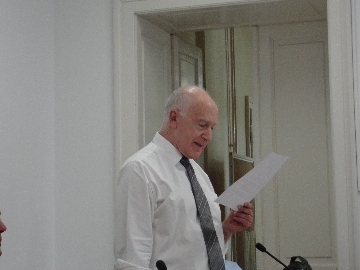
Ivo Šlaus |
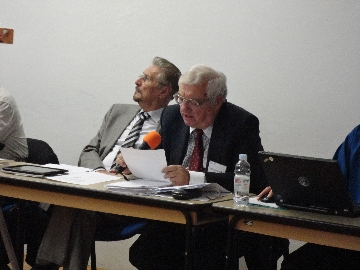
Emil Constantinescu and Yuri Scherbak |
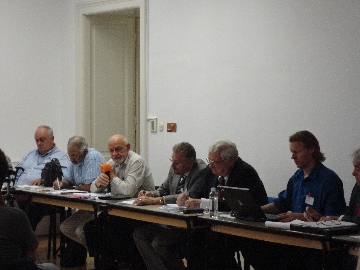
Paolo Cotta Ramusino, Winston Nagan, Francesco Calogero, Emil Constantinescu, Yuri Scherbak and Alyn Ware |

Nebojsa Neskovic, Budimir Lon?ar and Benjamin Gittins |
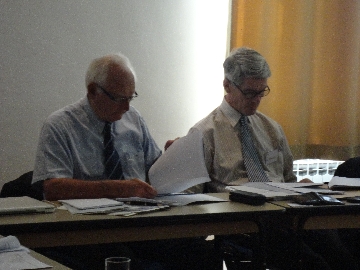
Yuri Nazarkin and Ted Whiteside |
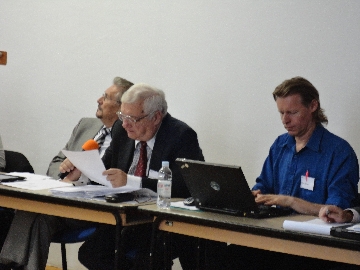
Emil Constantinescu, Yuri Scherbak and Alyn Ware |
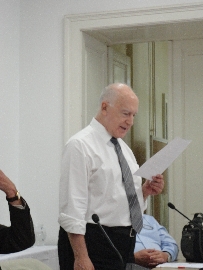
Ivo Šlaus |
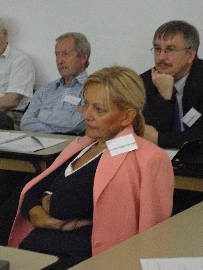
Janusz Onyszkiewicz, Sanjas Bujas Juraga and Bernd Allert |
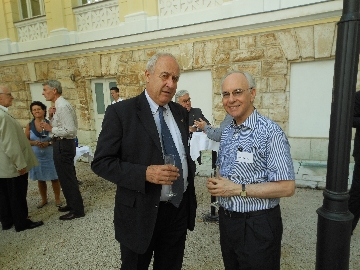
Momir Djurovic and Garry Jacobs |
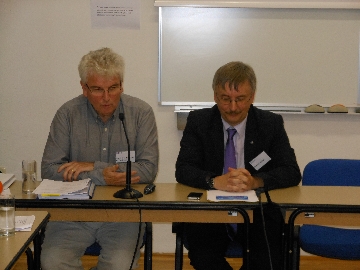
Desmond Browne and Bernd Allert |
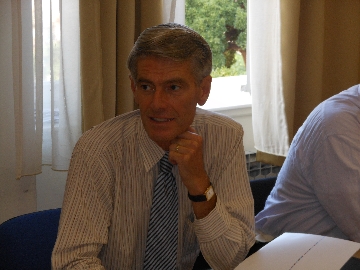
Ted Whiteside |
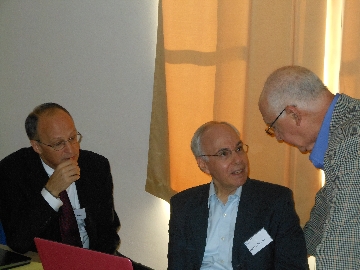
Ward Wilson, Garry Jacobs and Ivo Šlaus |
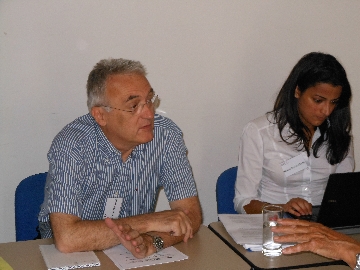
Nebojsa Neskovic and Shatabhisha Shetty |
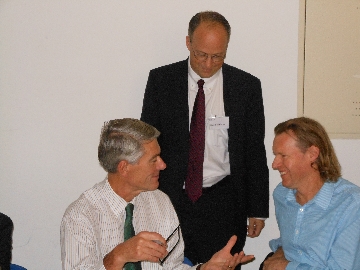
Ted Whiteside, Ward Wilson and Alyn Ware |
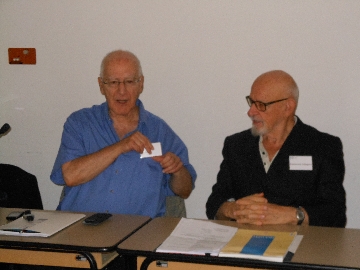
Ivo Šlaus and Francesco Calogero |
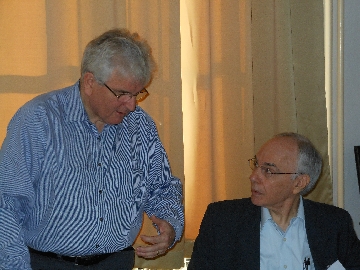
Desmond Browne and Garry Jacobs |
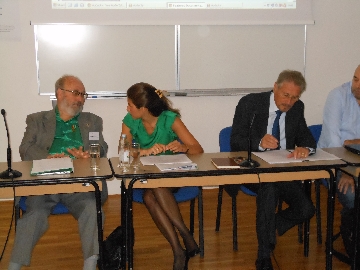
Martin Ramirez, Stela Petrova, Emil Constantinescu and Enes Zukanovi? |
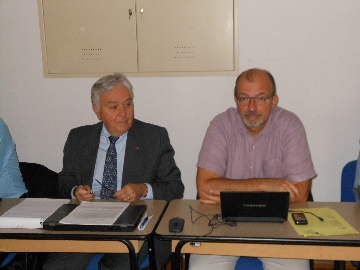
Paul Walker and Neven Dui? |
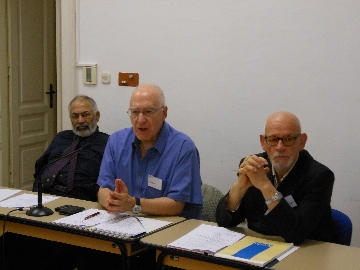
Winston Nagan, Ivo Šlaus and Francesco Calogero |
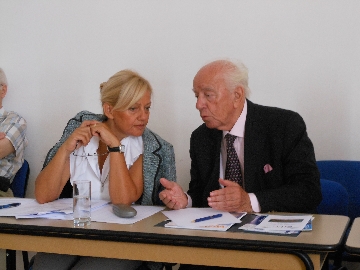
Sanjas Bujas Juraga and Budimir Lon?ar |
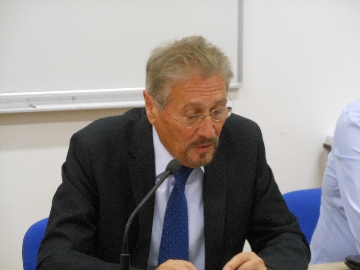
Emil Constantinescu |
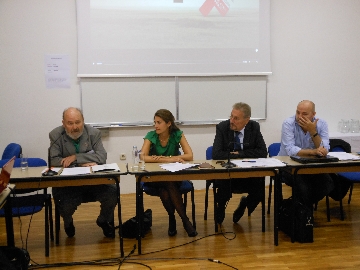
Martin Ramirez, Stela Petrova, Emil Constantinescu and Enes Zukanovi? |
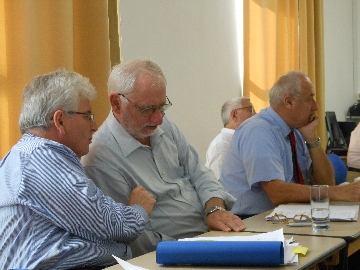
Desmond Browne, Mladen Stanicic and Momir Djurovic |
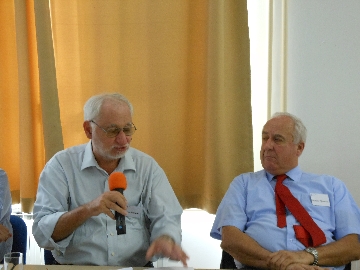
Mladen Stanicic and Momir Djurovic |
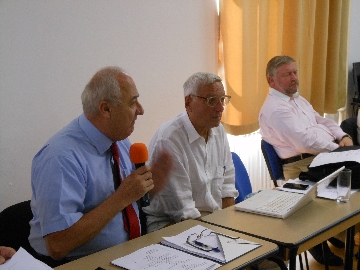
Momir Djurovic, Giorgio La Malfa and Alexander Nikitin |
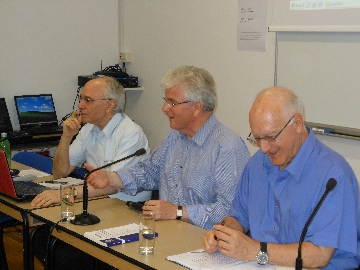
Garry Jacobs, Desmond Browne and Ivo Šlaus |
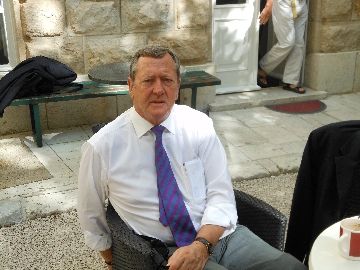
Colum Murphy |
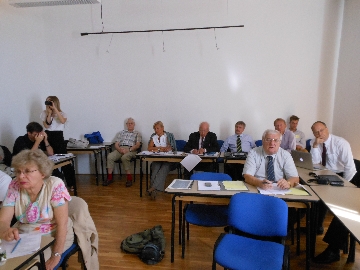
|

|
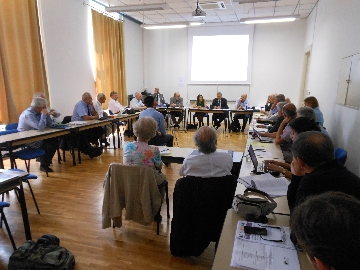
|
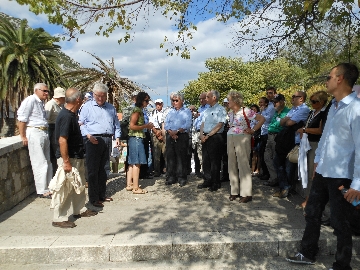
|
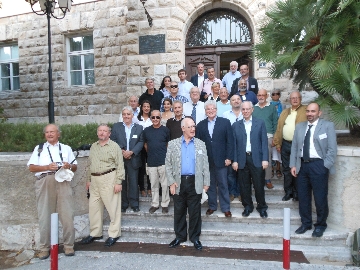
|
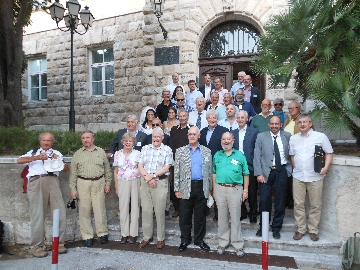
|

|
|
Introduction by Ivo Šlaus Message from President Ivo Josipovic’ |
Transition from War to Culture of Peace |
Nuclear Weapons and Euro-Atlantic Security |
|
NATO’s Perspective of Nuclear Weapons |
Sovereignty, Global Governance and Nuclear Weapons by Emil Constantinescu |
Nuclear Weapons & International Law |
|
Nuclear Weapons & International Law |
Nuclear Weapons & International Law |
Nuclear Weapons & International Law |
|
Nuclear Weapons Free Zone for the Middle East |
US Inversion Leadership in Global Governance and the role of the New Strategic Arms Reduction Treaty by Stela Petrova |
Role of NATO in Inter/Intra State Conflicts and Weapons of Mass Destruction by Bernd Allert |
|
Nuclear Weapons Free Zone for the Middle East |
Nuclear Weapons Free Zone for the Middle East |
Nuclear Security in SE Europe and Black Sea Region |
|
Illicit Trade in Nuclear Materials |
Nuclear Energy & Climate Change |
Role of Nuclear Energy in EU Energy Policy |
|
Transformation of Vinca Institute of Nuclear Sciences |
Nuclear Weapons Free Zone for the Arctic Region |
Global Cyber Security: Threats & Solutions |
|
Seville Statement of Violence |
Nuclear Energy & Nuclear Weapons |
Illicit Trade in Nuclear Materials in Ukraine |
|
Existence of Threats in Illicit Trade in Nuclear Materials by Enes Zukanovic |
The Effect of Rhetoric in the Island of Herzegovina |